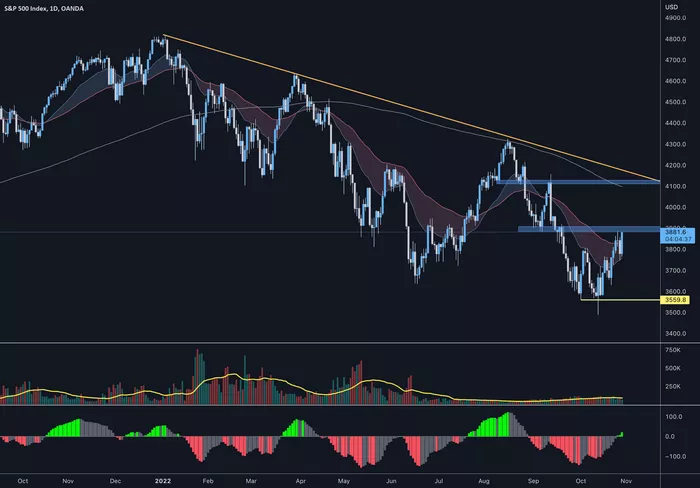In today’s digital era, learning how to buy stocks online is more accessible than ever. With just a few clicks, anyone with an internet connection and some basic knowledge can start investing. But before diving into the vast stocks market, it’s essential to understand how it works, how to evaluate stocks price, and what stocks trading entails.
This beginner’s guide will take you through every step—from choosing the right broker and placing your first order to building a smart portfolio and managing risks. Whether you’re aiming for long-term growth or short-term gains, this comprehensive article will equip you with the tools and confidence to make informed investment decisions online.
Understanding the Stocks Market
The stocks market is where buyers and sellers trade shares of publicly listed companies. It operates through exchanges like the NYSE or NASDAQ, and increasingly, through online platforms. Understanding the market’s structure helps you grasp the forces driving stocks price movements.
Key players include retail investors, institutional investors, market makers, and regulators. Each plays a role in maintaining the market’s efficiency and liquidity. For a beginner, the most critical concept is that stock prices reflect current market sentiment and company performance. This understanding will help you make better decisions when trading stocks.
What Are Stocks and Why Invest in Them?
Stocks represent ownership in a company. When you buy a stock, you’re essentially purchasing a small piece of that business. As a shareholder, you may benefit from price appreciation and dividends. People invest in stocks to grow wealth, hedge against inflation, and achieve financial goals like retirement or education funding.
The stocks market offers various sectors—technology, healthcare, finance, and more—so investors can diversify their portfolios and manage risk effectively. Understanding the types of stocks (common vs. preferred, growth vs. value, domestic vs. international) is a vital part of your investing foundation.
Step-by-Step: How to Start Buying Stocks Online
1. Set Financial Goals and Understand Risk Tolerance
Before investing, define your financial objectives. Are you saving for retirement, building wealth, or looking for passive income? Your goals influence the kind of stocks you buy. Risk tolerance—the amount of volatility you can handle—will also guide your decisions. Conservative investors may prefer stable dividend-paying stocks, while aggressive investors might explore growth or tech stocks.
2. Choose a Reliable Online Brokerage
Selecting an online broker is the first actionable step in buying stocks. Look for platforms that offer user-friendly interfaces, low fees, solid customer support, and educational resources. Some of the most popular brokers include Fidelity, TD Ameritrade, E*TRADE, and Robinhood.
3. Open and Fund Your Account
Opening an account involves filling out personal information, verifying your identity, and linking a bank account. Once your account is active, fund it through a bank transfer. Be aware of the minimum balance requirements, which vary by broker.
4. Research Stocks Before Buying
Use analytical tools provided by your broker to evaluate company fundamentals like earnings, revenue, debt, and market position. Monitor technical indicators if you’re interested in short-term stocks trading. News articles, annual reports, and financial ratios can help you assess whether a stock is overvalued or undervalued based on its current stocks price.
5. Decide How Many Shares to Buy
Determine how many shares fit your budget and risk profile. Fractional shares allow investors to buy less than one full share, which is helpful if high stocks prices are a barrier. Avoid investing all your money in a single stock to reduce risk exposure.
6. Choose an Order Type
Order types include:
Market Order: Buys at the current market price.
Limit Order: Executes only at a specific price or better.
Stop-Loss Order: Automatically sells when the stock hits a set price to limit losses.
7. Monitor Your Portfolio
Investing doesn’t stop after purchase. Keep an eye on market news and company updates. Rebalance your portfolio periodically and review your investments’ performance against your goals. Some platforms allow automatic investing and rebalancing, which is useful for passive investors.
Tips for Smart Online Stocks Trading
Start Small
As a beginner, it’s wise to start with a small investment. Gain confidence and knowledge before committing larger sums.
Diversify Your Investments
Diversification reduces risk. Don’t put all your money into one stock or sector. Spread your investment across industries and geographies.
Think Long-Term
Trying to time the market rarely works. Focus on long-term growth and let your investments compound over time.
Beware of Emotions
Fear and greed often lead to poor decisions. Stick to your investment strategy and avoid panic-selling or impulsive buying.
Use Research Tools
Most brokerages offer stock screeners, analysis reports, and financial news updates. Use these tools to stay informed and make rational choices.
Understanding Stocks Price Movements
Stocks price is influenced by numerous factors, including earnings reports, interest rates, inflation data, industry trends, and investor sentiment. Global events like geopolitical tensions or economic downturns also play a role. As an investor, understanding what drives stocks price can help you anticipate opportunities and threats in the stocks market.
Common Mistakes to Avoid When Buying Stocks Online
Ignoring Fees: Transaction fees, account maintenance costs, and taxes can erode profits.
Chasing Hype: Investing based on rumors or social media can be risky and speculative.
Lack of Research: Buying without understanding the business model or financials is dangerous.
Overtrading: Frequent trading incurs fees and may reduce long-term gains.
Neglecting Risk Management: Always use stop-loss orders and diversify your holdings.
Best Practices for Beginners
Stick to established companies with solid financials. Consider index funds or ETFs to gain exposure to the stocks market without picking individual stocks. Reinvest dividends to accelerate growth, and don’t let short-term volatility derail your long-term plan.
Tools and Resources for Stock Market Beginners
Online platforms offer educational videos, podcasts, articles, and simulation tools. Websites like Financial Focus Hub provide updated information on stocks trading and stocks price analysis. Use these to stay updated and refine your strategy.
Conclusion
Buying stocks online is a powerful way to build wealth when done wisely. Start with clear goals, understand the workings of the stocks market, choose a trusted platform, and never stop learning. As you grow more confident, you’ll be better equipped to handle market changes and make smarter financial decisions.
Whether you’re aiming for early retirement, passive income, or financial freedom, your journey begins with that first step: placing your first stock order. Stay disciplined, informed, and patient—and the rewards will follow.
Related topics:































